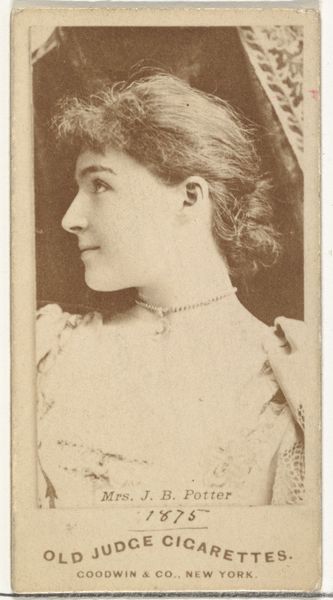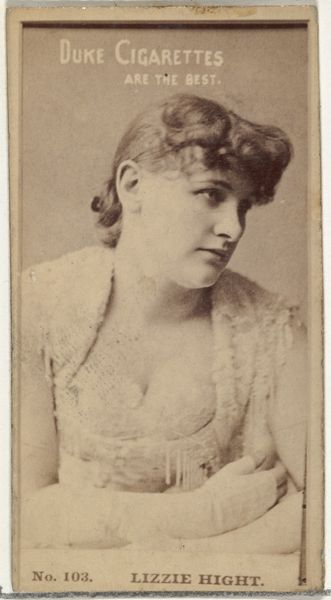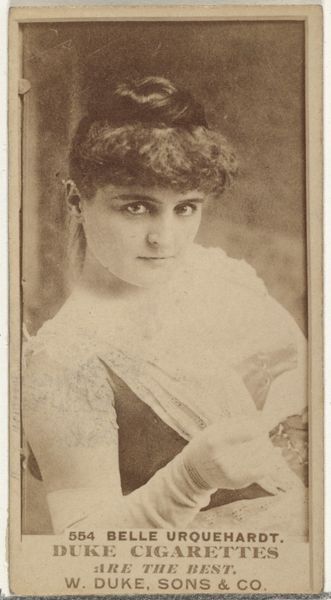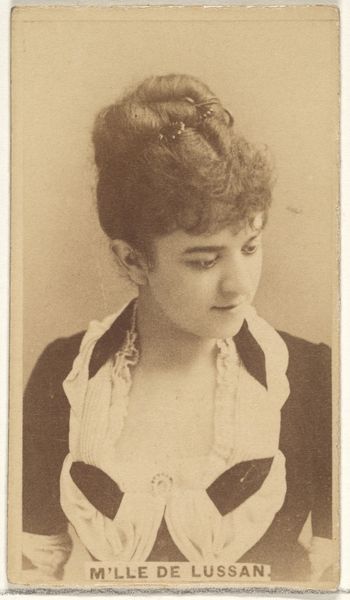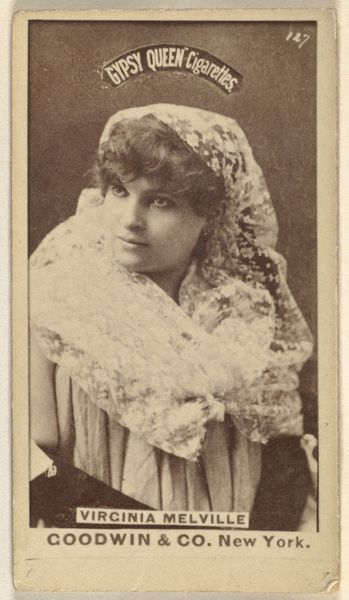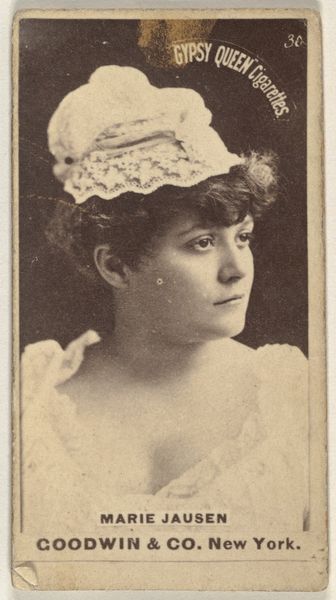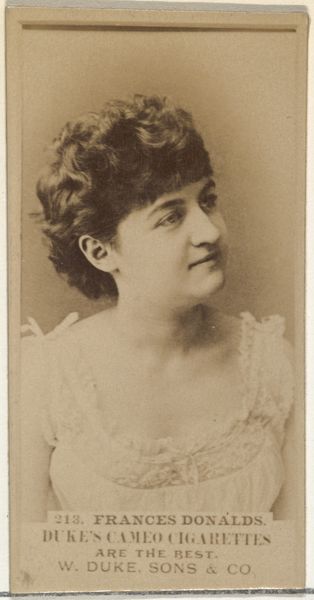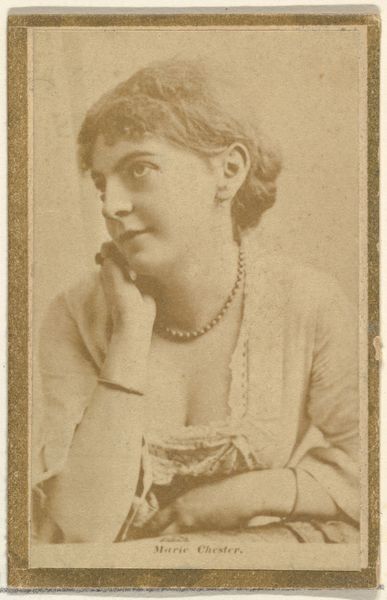
Sadie Martinot, from the Actors and Actresses series (N171) for Gypsy Queen Cigarettes 1886 - 1890
0:00
0:00
drawing, print, photography
#
portrait
#
drawing
# print
#
photography
#
post-impressionism
Dimensions: sheet: 2 11/16 x 1 3/8 in. (6.9 x 3.5 cm)
Copyright: Public Domain
Curator: Here we have a sepia-toned photograph, part of a larger series of collectible cards called "Actors and Actresses." This particular card, made between 1886 and 1890, features the actress Sadie Martinot. Goodwin & Company distributed these cards with their Gypsy Queen Cigarettes. Editor: The soft, diffused light lends her face an almost ethereal quality. It's romantic, bordering on sentimental. What strikes me most is the delicate contrast between her loose flowing hair and the sharp typography of the text around the image. Curator: The distribution of these cards reflects a fascinating aspect of consumer culture in the late 19th century. These trade cards became incredibly popular, turning everyday objects into vehicles for marketing. Sadie Martinot, like other actresses, gained additional visibility through this medium. The image offered a tangible connection between the performer and her audience, shaping her public persona and the role of celebrity endorsement in a new era of media. Editor: I find the composition rather striking. Look how the photographer uses soft focus to draw the eye to her features while diminishing distractions; her flowing locks almost echo the curves in the brand label above, subtly associating the product with allure. Curator: And that's precisely the intent. These portraits weren’t about capturing "reality"; they were crafted to project ideals of beauty and desirability to associate with their brand. Martinot’s refined demeanor serves as a form of endorsement. What is she really endorsing? Consumption itself! She has now transformed into a commodity herself, packaged for sale. Editor: Well, from a purely visual perspective, one can certainly appreciate the image's nostalgic charm, and the technical aspects of early photography. Even its monochrome tonality contributes a subtle depth to the photograph, highlighting the different textures. Curator: Absolutely. It highlights the way early photography intersected with both commercial interests and changing social perceptions of art and entertainment. In the theater, Martinot helped bring Gilbert & Sullivan to America. Here, the photograph has frozen her into this moment, turning her into a representation of what was fashionable and commercially desirable at that time. Editor: So much is encoded within such a simple composition and an elegant photo. The commercial considerations behind a portrait are very visible! Curator: Exactly. It demonstrates how mass production and cultural trends influence each other and how art adapts to the demands of society.
Comments
No comments
Be the first to comment and join the conversation on the ultimate creative platform.
